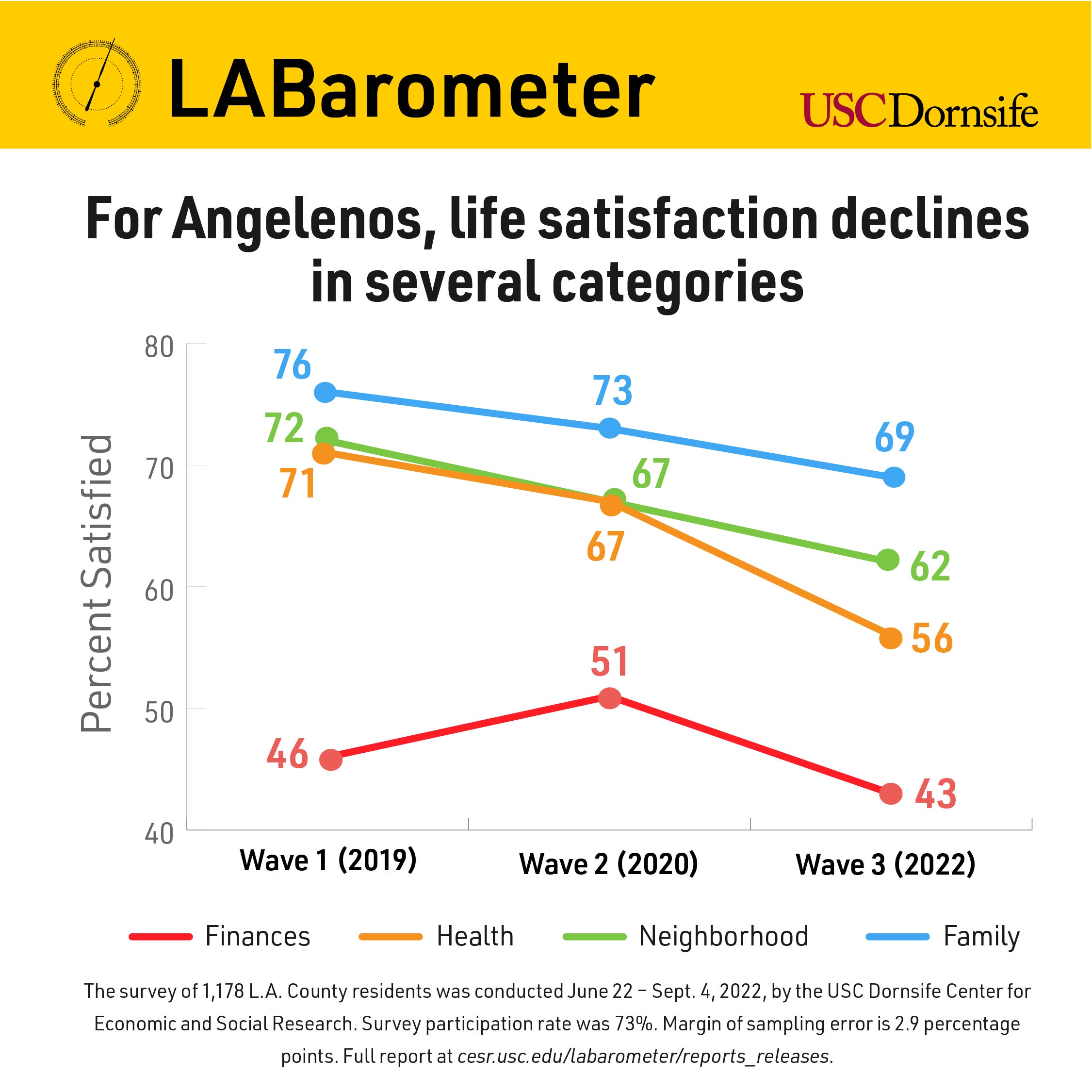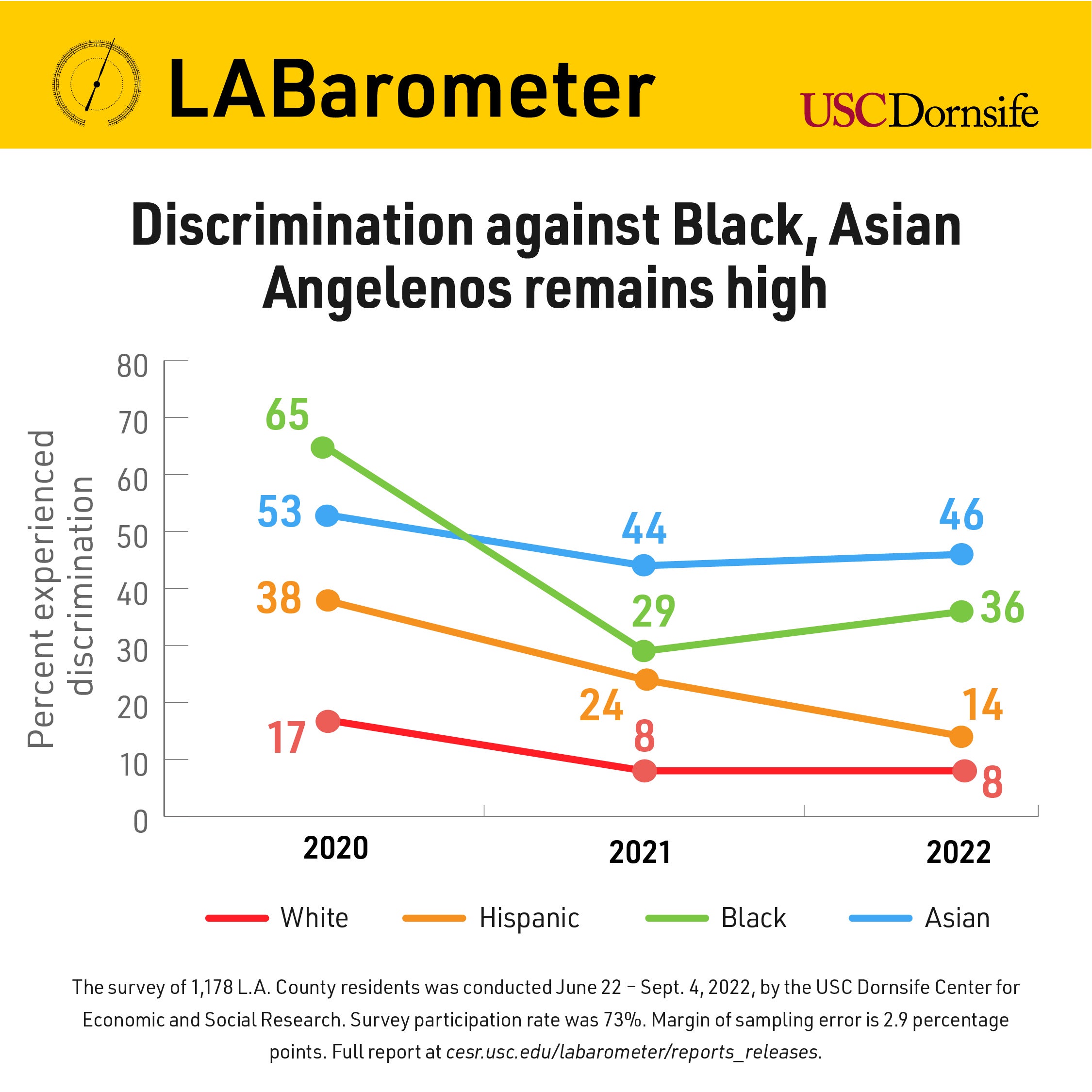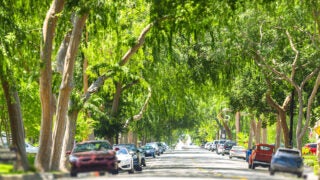
Nearly 3 years since start of pandemic, USC Dornsife report shows how life in L.A. is changing
Overall life satisfaction continues to decline and racial discrimination against Asian and Black Angelenos remains high, but fewer people are planning to leave the county, according to a new LABarometer livability and affordability survey.
Los Angeles County residents are generally less satisfied with their lives than they were before the pandemic, according to the third annual USC Dornsife LABarometer survey on livability and affordability, released today by the Center for Economic and Social Research at the USC Dornsife College of Letters, Arts and Sciences.
The survey, conducted from June 22 to Sept. 4, asked a representative sample of 1,600 L.A. County residents a series of questions about overall life satisfaction, future housing plans, neighborhood change, experiences with racial discrimination and crime-related stress as well as access to and affordability of critical resources like housing, health care and more.
“Angelenos are far less satisfied with their health, finances, family life and neighborhoods than they were last year,” said Kyla Thomas, director of USC Dornsife’s LABarometer and a sociologist. “Nonetheless, far fewer people are planning to leave L.A., a sign that the pandemic exodus may be slowing down. Moving, in general, declined in popularity this year, likely because of returns to in-person work and spikes in rent and interest rates.”
“The high rate of racial discrimination experienced by Asian and Black Angelenos is particularly disturbing,” added Thomas, who noted that reports of racial discrimination against Asians haven’t declined much since the height of the pandemic.
Finding of Los Angeles survey on livability and affordability

Three percent of Angelenos plan to leave L.A. in the next year — down from 10% in 2020 — and renters are driving most of the change.
- Economic conditions are likely behind the reported decline in plans to move as residents face skyrocketing rental costs and mortgage rates.
- In 2020, 12% of renters and 4% of homeowners reported plans to leave L.A. By 2022, the percentage of renters and homeowners both fell to 3%. To rule out population change as a confounding factor, researchers conducted a second analysis in which they restricted the sample to only residents that participated in both Wave 3 (2022) and Wave 2 (2020).

Forty-six percent of Asian Angelenos experienced racial/ethnic discrimination in the past year, up 2 percentage points from 2021.
- Results are consistent with reports of high rates of anti-Asian discrimination nationwide since the start of the COVID-19 pandemic.
- Black Angelenos have experienced an overall decline in reported racial/ethnic discrimination since 2020. While each of the racial/ethnic groups experienced declines in discrimination between 2020 and 2021, the slope of change among Black residents was especially pronounced, going from 65% in 2020 down to 29% in 2021. This was followed by a sharp increase to 36% by 2022.
- Hispanic Angelenos were the only racial group to experience a continued decline in incidents of perceived discrimination.
Nearly 3 in 4 Angelenos delayed or went without some type of medical care they needed over the last 12 months — primarily due to cost and availability challenges.
- Among the 9 in 10 Angelenos who needed some type of medical care in the past year, 72% delayed or left unaddressed at least one issue for which they needed care.
- Angelenos were most likely to delay or skip dental care (29%), mental health care (25%), specialty care (22%), vision care (21%) and primary care (18%).
- The most frequently cited reasons for delaying/forgoing care were cost (43%), lack of appointment availability (31%), not being able to take time off work (18%), lack of insurance coverage (16%) and feeling nervous to see a doctor (14%).
The survey of 1,178 L.A. County residents was conducted from June 22 to Sept. 4, 2022, by the USC Dornsife Center for Economic and Social Research. The survey participation rate was 73% and the margin of sampling error is 2.9 percentage points.
View the full report online.



